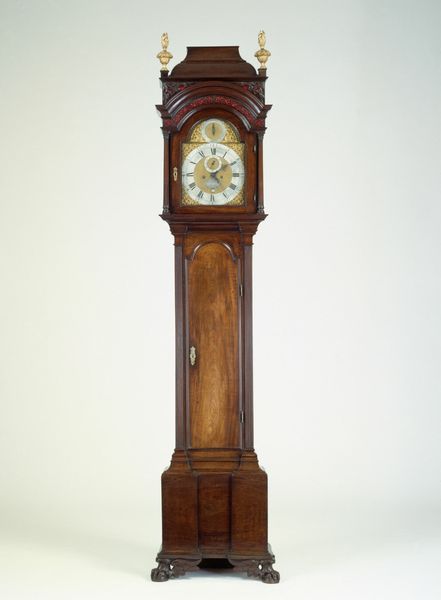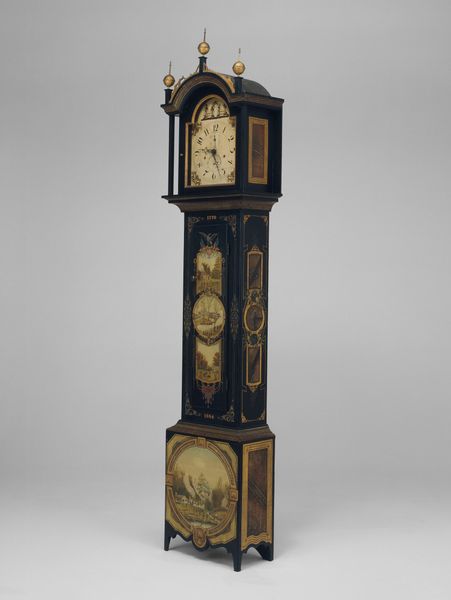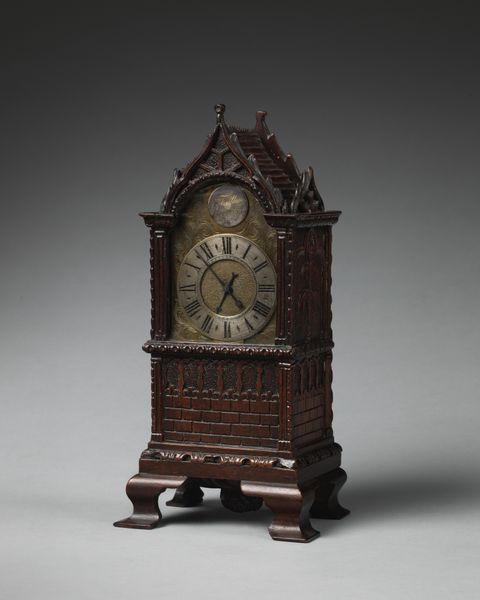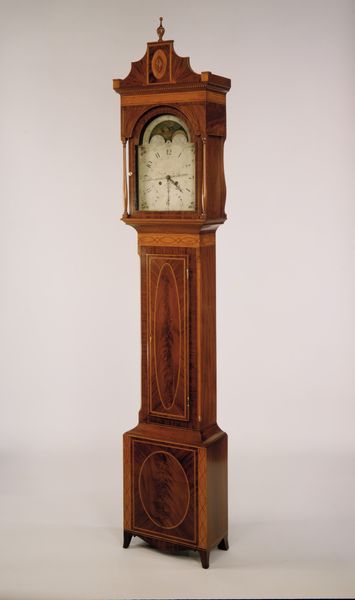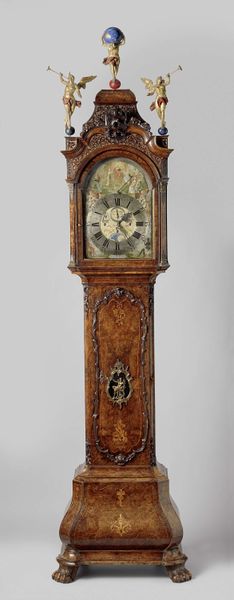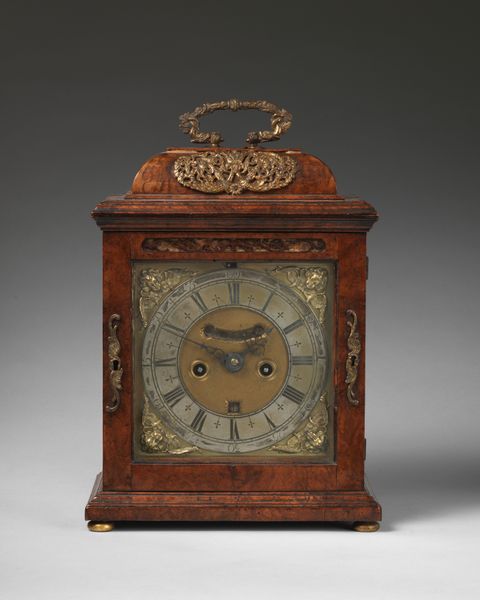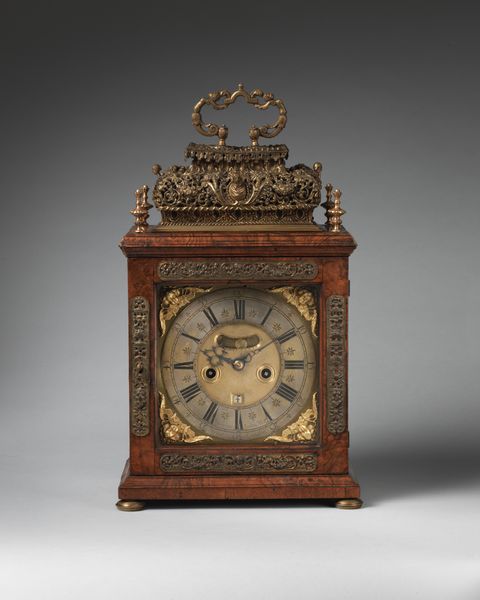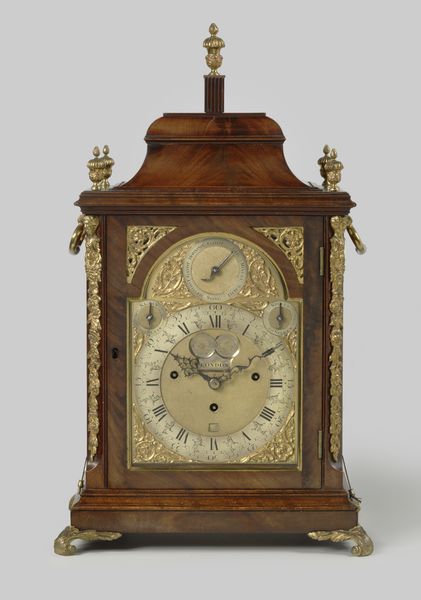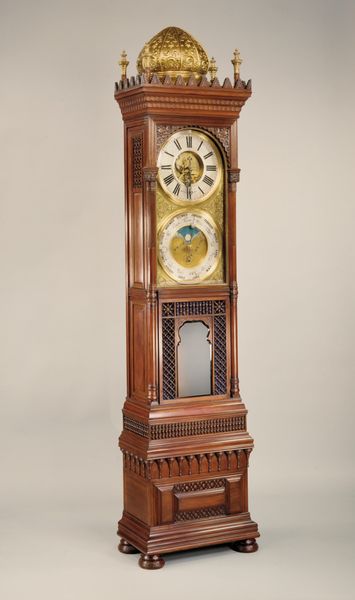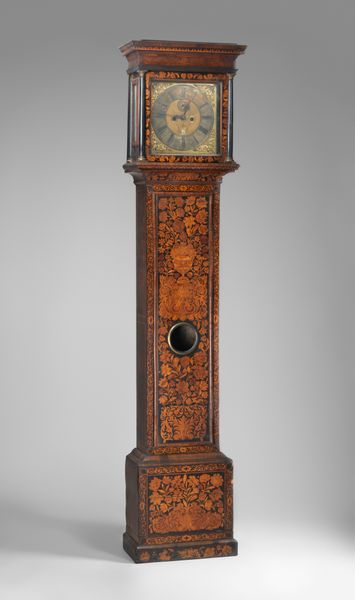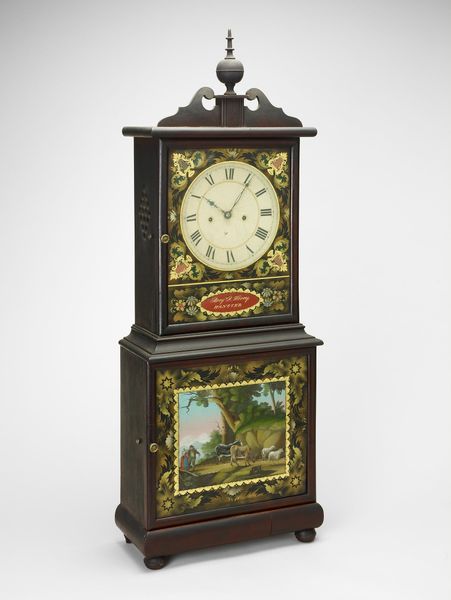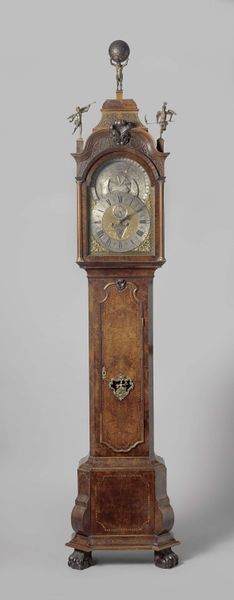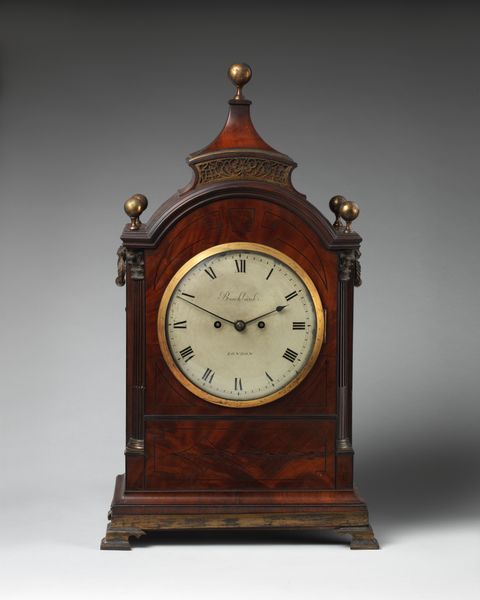
Dimensions: height 149.5 cm, width 75.0 cm, depth 50.0 cm, width 75.0 cm, depth 50.0 cm
Copyright: Rijks Museum: Open Domain
Editor: So, we have before us a Clock Case, dating back to around 1780. It was crafted by Matthijs Horrix, and it’s made of wood and includes carving. I am just really captivated by the overall oriental aesthetic and elaborate details – especially those quirky dragon feet! What catches your eye when you look at this piece? Curator: You know, I am immediately drawn to the delightful tension between the clock's function and its elaborate ornamentation. Can't you imagine the artisans who designed this piece? I like to think they pondered on themes of time and culture, seamlessly merging European horology with exotic motifs. It is like a playful commentary on trade and cultural exchange during the late 18th century. Doesn’t the pagoda roof and those aforementioned delightful dragon feet speak of the fascination with the East that was sweeping Europe? Editor: Absolutely, and the contrast is just amazing! This elaborate, almost whimsical, exterior, housing this very precise, time-telling mechanism… Curator: Right? It's as if the clock is saying, "I may tell you the time, but I’ll do it with a flourish, with a touch of the exotic." And those wood carvings—they tell their own stories. Can you almost feel the hands that meticulously shaped them? I do love how an everyday object transforms into something that evokes a journey. Editor: I see it. This clock isn't just about timekeeping, it's a statement about worldliness, really adding personality and artistry into the practical! Thanks, that’s something I’ll keep in mind as I look at decorative art. Curator: Indeed. It’s like finding a storybook where you expected just a timetable, right? Keep digging, and those stories always appear!
Comments
No comments
Be the first to comment and join the conversation on the ultimate creative platform.
